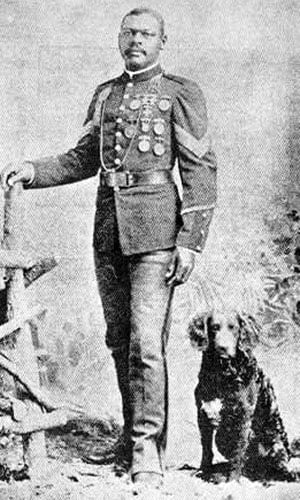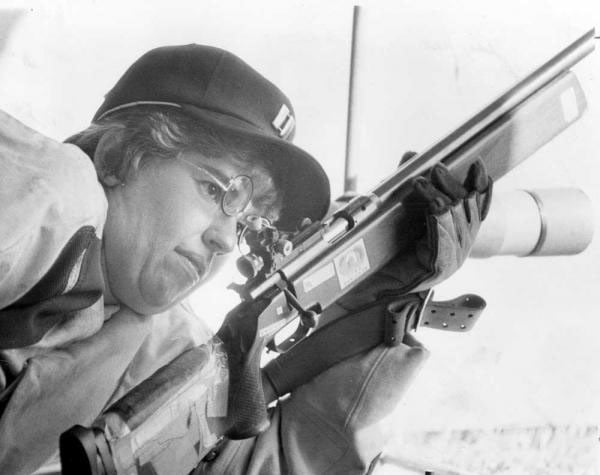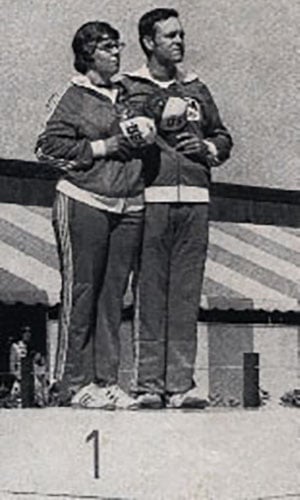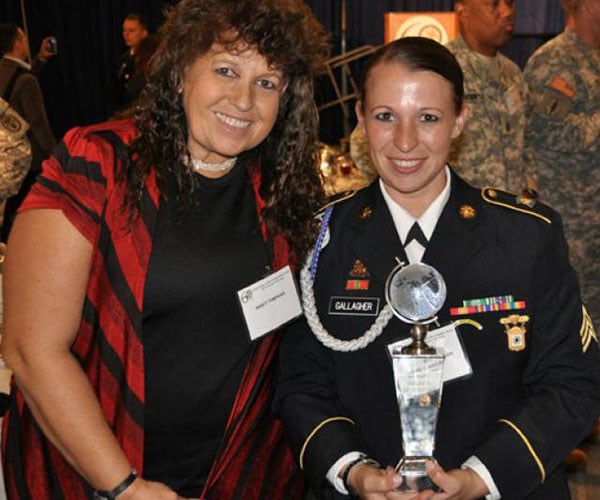
Last Updated on
Marksmanship programs have been the longest serving and most equal opportunity compliant readiness resource in history.
Equal Opportunity programs are intended to direct and sustain a comprehensive effort to maximize human potential and to ensure fair treatment for all persons based solely on merit, fitness, and capability. The goals of the EO program are to provide equal opportunities and fair treatment for personnel without regard to race, color, gender, religion, national origin, and provide an environment free of unlawful discrimination.
The Army has long been a proponent of Equal Opportunity programs, often as an early adopter that is used as a model for other government agencies and businesses. No other readiness component in the Army has been offering equal opportunities for Soldiers longer than the Marksmanship Program. Shooting programs removed barriers to race and gender decades before it was mainstream and long before the Army officially enacted a formal Equal Opportunity policy.
Army marksmanship programs can trace their linage back to when General Philip Sheridan officially created the Distinguished Marksman class back in 1884. This was formalized by the War Department (predecessor to the current Department of Defense) in 1887. The original concept has been run continuously ever since. Marksmen participate in Excellence In Competition events and the top ten percent of the eligible, non-distinguished competitors are awarded “Leg” points at the event. Like the leg of stool or chair or the leg of a journey, a number of points have to be accumulated over the shooter’s lifetime for specific awards. The first leg is the EIC Bronze medal. After 20 lifetime points are accumulated, the Silver EIC medal is awarded. Once 30 or more points are earned, the shooter reaches Distinguished status. EIC events are held for rifle and pistol shooting and there are Distinguished Rifleman and Distinguished Pistol Shot badges.
These awards are more prominent than normal qualification badges and eligible for wear on dress uniforms. Like combatives, instead of Level 1-4 to recognize accomplishment, Bronze, Silver and Gold badges are awarded. The Marine Corps also maintains this program, as does the Civilian Marksmanship Program (CMP) for civilians. Distinguished marksmen come from all walks off life, even outside the military. The CMP maintains all master records in their Competition Tracker and is available online at their website.
In the entire 130 year history of the program, with tens of millions of Soldiers serving, a total of 3,383 Soldiers have earned Distinguished Rifleman, 1,681 Distinguished Pistol Shot and 499 are Double Distinguished, having earned both.
Horace Bivins
Given so many eligible Soldiers and so few accomplishing a Distinguished rating, let’s look at the first person in history to earn a Double Distinguished rating. Captain Horace Wayman Bivins earned the distinction in 1894. He was a Corporal at the time. He was also the first marksman to win three Army marksmanship gold medals in one year. Bivins had a military career that was so varied and full of adventure that early newspapers wrote his life’s account ‘‘reads like fiction from the imagination of a pulp magazine writer.”

Bivins was assigned to Troop E of the 10th Cavalry, which took a prominent part in the campaigns against Geronimo, Apache Kid, and other Indian chieftains of the southwest. While serving in Cuba during the Spanish-American War, Bivins was awarded a Silver Star from actions during the famous battle of San Juan Hill. A sergeant by then, Bivins was assigned to a Hotchkiss gun battery. With all other members of his unit killed or wounded, Bivins single-handedly fired 72 shells from a Hotchkiss guns, which recoiled six to eight feet after each shot. His performance was all the more remarkable in that early in the battle he had been knocked out briefly by a slug that passed through an iron-plated hub of a gun carriage and hit him in the temple. President Teddy Roosevelt recalled of the action: “I don’t think it an exaggeration to say that but for the timely aid of the 10th Cavalry, the Rough Riders would have been annihilated.”
Cpt. Horace Wayman Bivins, the first Double Distinguished marksman in United States history in 1894, was an African American. It would take more than five decades after this before Jack Roosevelt “Jackie” Robinson was able to receive the same acceptance in baseball. Lieutenant Colonel Earl Woods, father of pro golfer Tiger Woods, served two tours in Vietnam as an officer in the Infantry and Special Forces. While in college, Woods once was not allowed to play golf because of his race. In fact, the Professional Golfer’s Association of America (PGA) enforced a “Caucasian-only clause” in their official published rules until finally revoking their racist rule in the 1960s.
Margaret Murdock
Cpt. Margaret Thompson Murdock was the first woman to win a medal in Shooting at the Summer Olympics and the first to win an individual open World Shooting Championship. In international competition Murdock set four individual world records and nine team world records. She is a member of five halls of fame, including the USA Shooting Hall of Fame and the Kansas Sports Hall of Fame.
Cpt. Murdock started competing while attending college in Kansas. “My first year at K-State, I couldn’t shoot on the team because I was a woman,” she says. “I could practice with the K-State team but I couldn’t be on the team. They got a new coach and he thought it would be a good idea for me to be on the team since I was shooting better than everyone else.”

As the US International Rifle Team captain, Cpt. Lanny Bassham entered the 1976 Olympics as the reigning World Champion and had took silver in the 1972 Olympics. At the ’76 Olympics Murdock tied for first place with Bassham. Bassham requested a shoot-off, even though this wasn’t allowed by current rules. Instead, judges were forced to break the tie of the 1200 point match. Murdock appealed for a second review of her targets. The two Americans sat together and waited. Bassham noted while the judges re-tallied scores: “I looked at her and said, ‘If this comes out a tie, it will be totally arbitrary that I beat you.’ “
Both marksmen had experience with the rule. Because of it, Bassham had lost the 1974 world air-rifle championship, and Murdock had won her place on the Olympic team, after tying with John Writer in the Trials. “It has nothing to do with skill,” she said. “It’s just to save the officials the bother of a shoot-off.” Thus when the review Murdock had requested failed to break the tie, she and Bassham asked the International Olympic Committee whether two gold medals could be given but was denied. “I can’t be upset at any individual.” Bassham said. “Everything was done by the book. There was no discrimination against Margaret because she was a woman. Not here. If anyone is at fault it is me for not trying to change the tie-breaking rule in 1974.”
During the national anthem, Bassham pulled Murdock up to stand with him on the gold medal spot at the podium to share the victory platform with him as the flag was raised and the anthem played and the two stood together. “I wanted to show that I felt her performance had equaled mine,” said Bassham. “It was not an act of defiance but a personal thing. There was no way she deserved to stand lower while the national anthem was played.”

Sherri Jo Gallagher
In 2010, Army marksman Sherri Jo Gallagher was the second woman in history to be crowned the U.S. National High Power Champion, posting a record breaking score of 2396-161x out of 2400 that still stands as the highest score ever posted at this event. She took eight of the twelve match trophies that make up the annual national championship and bested the previous record of 2389-138x set by High Power legend David Tubb in 2003.

Sergeant Gallagher comes from a family of shooters and has had a rifle in her hands since she was young. Her mother, Nancy Tompkins-Gallagher, is a previous High Power Rifle champion, the first woman to do so, winning the national championship in 1998. Nancy also won the famed Wimbledon Cup in 1993. Sister Michelle Gallagher has won the Wimbledon Cup five times, her first time at age 16, as well as the overall Long Range Championship. By comparison, famed Marine sniper Carlos Hathcock “only” won the Cup once.
Preparing for Camp Perry and other matches falls in line well with what all members of the Army Marksmanship Programs do. “We spend most of our time in the off season training up soldiers,” Sgt. Gallagher said.
Equal opportunity polices demand treating all personnel and others without discrimination, especially on the basis of their sex, race, or age. In addition to being a critical skill for Soldier readiness, marksmanship programs have been creating equal opportunities decades before EO programs were formalized.




Leave a Reply